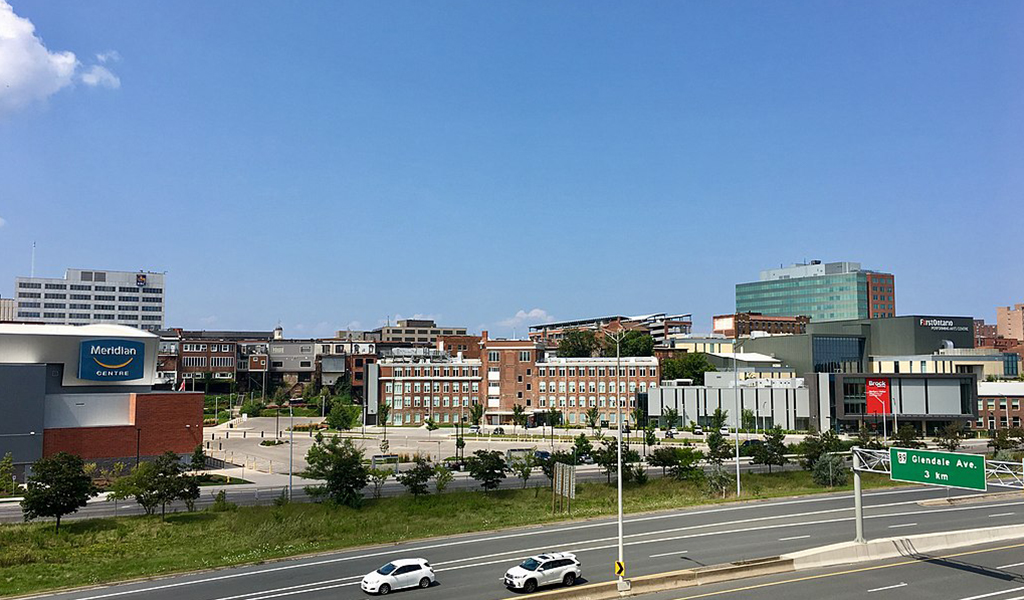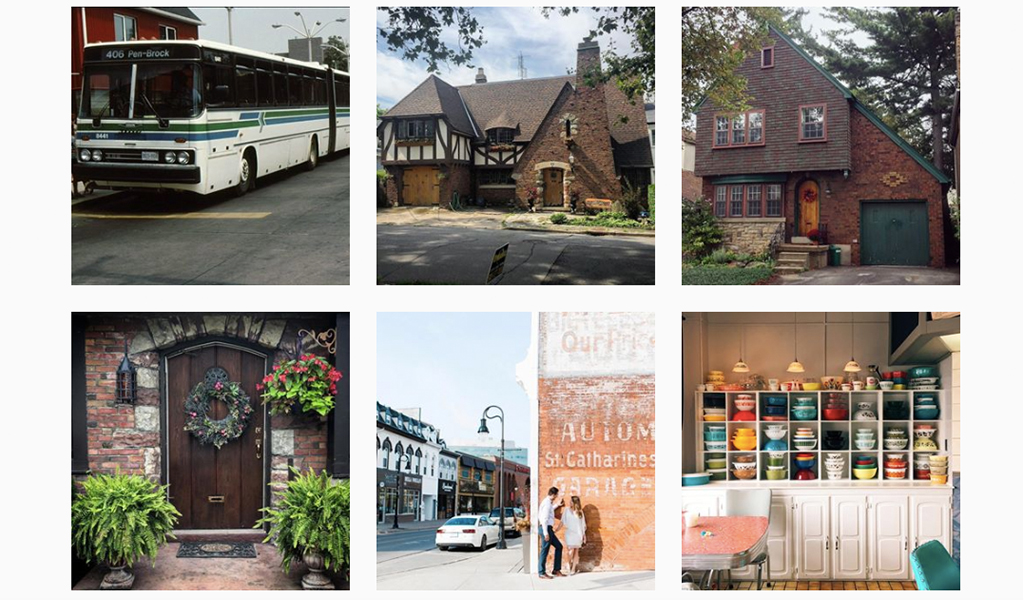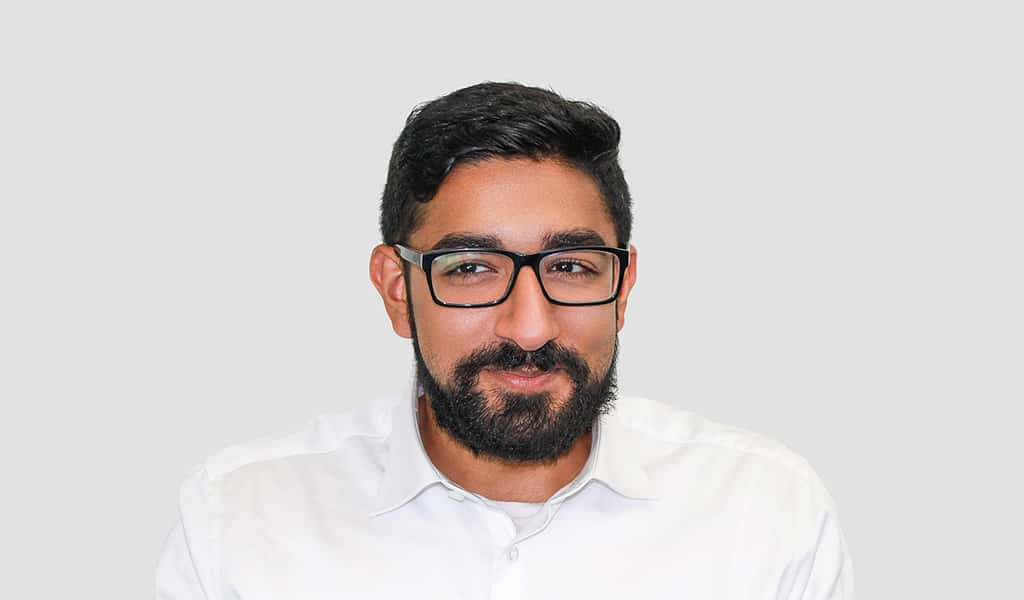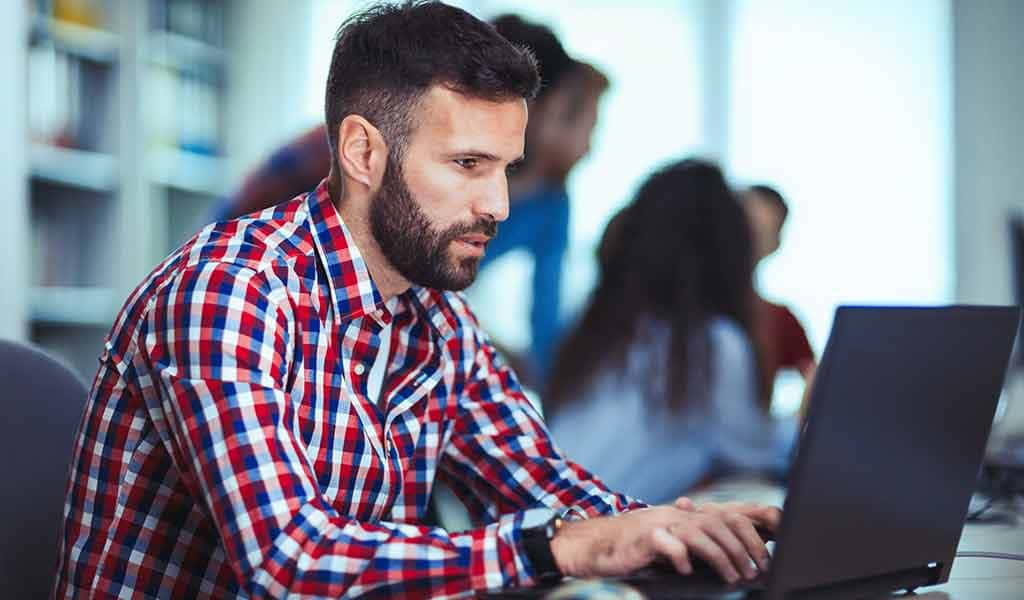Why I choose St. Catharines for Caddle
Why I chose St. Catharines
Four years ago, I had just quit my full-time marketing job to establish and launch Caddle. While we could have chosen Toronto or any of the cities within Hamilton or the GTA, we’ve never wavered from knowing that St. Catharines, Niagara is home.
Making the choice was easy because we want to see St. Catharines thrive. For myself and many of our management team, our decision was personal; we have roots in Niagara and want to be part of its success as it becomes a major contender in Canada’s digital economy.
Here are a few reasons I continue to choose St. Catharines:

Source: Wikimedia
1. Access to high-quality talent and lower startup costs
Four years in, I’m still often shocked by what’s here. If we can’t find the talent we need right in St. Catharines, it’s in Grimsby or another of Niagara’s municipalities. We chose Niagara as our home for the region’s lower cost of living, beautiful natural wonders, high quality of life, and arguably easier access to talent. The cost to launch is lower here, too – a huge plus when you’re a founder of a small startup looking to establish a home base. If we’d located in Toronto, we would have at least quadrupled our burn rate with the increase in costs.
In contrast, Niagara offers the best of both worlds – a growing region, it’s just far enough (about an hour and a half) away from hectic mid-Toronto traffic but close enough that we can jump on the QEW and zip up to the big city when we need to. Plus we now have the daily GO train going right into Union!
While Toronto’s talent pool may be 50 times larger than Niagara’s, there are 100 times more companies in Canada’s largest city competing for top employees. In terms of high-quality talent per capita, I feel we’re in a better position here.
Caddle is thriving and continues to grow. In Toronto, we’d have been one of a million promising startups. In St. Catharines, we’re a big fish in a small pond. We attract highly talented web developers, marketers, Customer Experience and IT staff, and more.
2. Exceptional quality of life and sense of community
Our employees love the short, easy commute as well – Brian Cline, our Head of Technology, lives in Niagara Falls and commuted to Etobicoke for years. Now, he has about a 20-minute drive to work.
Most of our staff live within a 15 to 20-minute drive, which means they can spend more time with their families and less time facing the gridlock of GTA traffic every day. I walk to work in about seven minutes and often bring my dog, Maya, in with me. We find that our staff love the community they live and work in. They’re also invested in our long-term success and are passionate about helping to build a positive, dynamic company culture.
From the first day, I’ve always stressed the importance of family, flexibility, and work-life balance. Because our employees tend to stick around, they enjoy a lot of trust and flexibility within our team, which makes for a happy, productive work environment.
If you’ve got an important appointment to attend or a can’t-miss recital for your kid, you can take time off and do that here in Niagara (which is essential – happy families mean happy people!) We always say that no matter where you are in the region, for the most part everything you’ll need – schools, food and entertainment, shopping, outdoor spaces like parks and hiking trails, the gym – is within a 30-minute drive. This all contributes to high employee satisfaction, low turnover rate and great work-life balance.

Source: Instagram
3. Government funding and support
While access to talent is a critical factor, so is funding and support. There are also unique opportunities for funding. For example, we’ve gained access to funds from federal and provincial levels of government looking to fund outside of the GTA.
As for local support, there’s Innovate Niagara, a business incubator and one-stop shop for the region’s entrepreneurs for intensive workshops, training and educational and networking events. The team there have been critical to our success, from walking us through incorporation to legal advice and hiring employees. They are one of many organizations, agencies, and companies playing a role in building our flourishing tech community.
When I knocked on their door, I had an idea, but I didn’t know how to turn it into an app. I didn’t know how to incorporate or where to find local talent. We’ve been with Innovate Niagara for more than two years, eventually joining their incubator at 1 St. Paul Street in downtown St. Catharines. We’re currently both located a few blocks from there, in the same building at 43 Church Street. Within our first three months, they’d connected me with legal resources, given me names of three local web developers, and introduced me to their executives in residence. They also provided access to mentorship, coaching, and funding for an early public relations campaign.

Source: Innovate Niagara
Wrapping up
Today, I love contributing my time to Niagara’s entrepreneurial community by speaking at events and participating on panels where I can promote Niagara.
Bonus: Doing this also helps me meet people working on amazing projects, and to develop as an entrepreneur. I’m still learning from our team, consumers, and the wider community every day, and don’t see that slowing down any time soon.
The future looks bright. We’re confident in the leadership at city hall and wholeheartedly believe in Mayor Walter Sendzik’s vision for the future. With the right programs, opportunities for incubation and the right incentives, St. Catharines (and Niagara as a whole) will be at the forefront of innovation. I look forward to the day when Caddle is just another of the many digital pioneers who saw Niagara’s potential in its early stages.
Demographics and loyalty in the workplace
Demographics and loyalty in the workplace
There are many reasons why living in Canada is so desirable: access to healthcare, education, our abundance of fresh water and beautiful nature – even employment. In fact, Canada continues to show a downward trend in unemployment year to year. Statistics Canada reports that in January 2018, Canada’s national unemployment rate was down to 5.9% from 6.8% in January 2017.

This positive trend in the workforce is not necessarily as beneficial for employers, however. Earlier this year, The Globe and Mail reported that 89% of Canadian employees are prepared to leave their current job for “the right offer,” up from 78% in 2014.
Analyzing employment trends, the Caddle team decided to ask Canadians if it’s okay to apply and interview for jobs, even if there is no intention of leaving a current position.
The majority of Millennials (29%) and Generation Z (31%) considered it completely acceptable to apply for other jobs, compared to the majority of Generation X (29%) considering it only somewhat acceptable, and Boomers (33%) considering this not at all acceptable.

When it comes to interviewing for a job you have no interest in taking, however, all four generations shared more similar views. The majority of Millennials (28%) and Generation Z (31%) considered this action only somewhat acceptable, while the majority of Generation X (30%) and Boomers (43%) considered this to be not at all acceptable.
There’s another split when it comes to gender as well – particularly around interviewing for a job despite being happily employed. The majority of men (28%) deemed this completely acceptable, while the majority of women (32%) deemed this not at all acceptable.
There are positives to applying and interviewing for jobs even if you’re happily employed: it’s valuable practice, an opportunity to expand your professional network and it’s a chance to get a better sense of where you stand compensation-wise. If you decide to apply or interview for another job, though, avoid letting it affect your day-to-day responsibilities, and always be careful not to burn bridges with either party.
How can employers stay competitive in a cash-driven culture?
Caddle Survey
In a recent survey of 10,000 Canadians, Caddle found that the majority of the workforce chose their current job for its better salary over their previous job (24% of Millennials and 23% of Generation X).
It appears that employers are recognizing this cash-driven culture and responding accordingly to attract new talent. In their 2018 Salary Guide, Export Development Canada (EDC) reports that 40% of employers are willing to break salary guidelines to recruit new hires, and offer 15% over expected salary to attract highly skilled professionals. EDC aptly points out that this approach is problematic, however, as the same 3,500 hiring managers EDC surveyed showed a continued trend toward offering less than 3% salary increases to existing employees. This results in a growing number of people willing to move jobs, up to 90% in 2018 from 75% in previous years.

With increasing expectations around salary and an aging population, how do Canadian employers stay competitive when hiring and attract top talent?
Human resources (HR) platform Pro Sky recommends focusing on developing a positive work environment, considering candidates with potential (i.e., over experience to date) and focusing on coaching and mentoring opportunities. Providing recognition and understanding work-life balance are other key assets.

HR consultant Sharlyn Lauby of HR Bartender suggests establishing a solid employee referral program, giving candidates a realistic job preview, and considering boomerangs (former employees who can return with fresh perspective and skills). Sharlyn also recommends focusing on the application and interview process, making it easy to apply and training hiring managers to interview well.

The BC Tech Association challenges employers to reduce response time and rounds of interviews, as top talent – especially in the tech industry – won’t necessarily stick through the whole process anymore.
Most importantly, EDC reminds employers to take care of the employees they already have before anything else.
Exploring travelling in Canada by car
Exploring travelling in Canada by car
In a Caddle survey taken this year, 90% of Canadians confirmed that they would recommend travel to Canada – and it looks like the world agrees. According to Statistics Canada, the number of U.S. tourists rose by 3.1% from 2016 to 2017, reaching 14.3 million in 2017.
If you’re inspired to see all Canada has to offer, here are just a few of the destinations you can reach by car from our many border crossings:

Alaska
If you’re driving through the Alcan border crossing:
· Yukon Wildlife Preserve (Yukon) – 5 ½ hours
o Miles Canyon (Yukon) – additional 30 minutes
o Emerald Lake (Yukon) – additional 30 minutes
· Nahanni National Park Reserve (Northwest Territories) – 16 hours
Washington and Idaho
From the Blaine border crossing:
· Whistler (BC) – 2 ½ hours
· Pacific Rim National Park Reserve (BC) – 6 hours
From the Eastport border crossing:
· Yoho National Park of Canada (BC) – 4 hours
Montana and North Dakota
Crossing from Sweetgrass:
· Dinosaur Provincial Park (Alberta) – 2 ½ hours
· Cypress Hills Interprovincial Park (Saskatchewan) – 3 ½ hours
· Banff National Park (Alberta) – 4 ½ hours
· Jasper National Park (Alberta) – 6 ½ hours
· Wood Buffalo National Park of Canada (Northwest Territories) – 17 ½ hours
Crossing from Raymond:
· Prince Albert National Park (Saskatchewan) – 6 ¼ hours
Crossing from Dunseith:
· Riding Mountain National Park (Manitoba) – 2 ½ hours

Michigan, New York and New England
Entering Canada from Detroit:
· Bruce Peninsula National Park (Ontario) – 5 ½ hours
Entering Canada from Niagara Falls:
· Algonquin Provincial Park (Ontario) – 3 ¾ hours
Entering from the Chateauguay border crossing:
· Ottawa (Ontario) – 2 ½ hours
· Mont Tremblant (Quebec) – 2 ½ hours
Entering from Jackman:
· Quebec City (Quebec) – 2 hours
From Fort Kent:
· Kouchibouguac National Park (New Brunswick) – 4 ¼ hours
Crossing at the Calais border:
· Fundy National Park (New Brunswick) – 2 ¼ hours
· Green Gables Heritage Place (PEI) – 4 ¼ hours
· Prince Edward Island National Park (PEI) – 4 ¼ hours
· Peggy’s Cove Lighthouse (Nova Scotia) – 5 ½ hours
· Skyline and Cabot Trails (Nova Scotia) – 7 ½ hours
Travelling from the Houlton crossing:
· Gros Morne National Park (Newfoundland and Labrador) – 19 hours
· St. John’s and Signal Hill (Newfoundland and Labrador) – 25 hours

Provincial and Territorial tourism sites
travelyukon.com
spectacularnwt.com
nunavuttourism.com
hellobc.com
travelalberta.com
tourismsaskatchewan.com
travelmanitoba.com
ontariotravel.net
quebecoriginal.com
tourismnewbrunswick.ca
tourismpei.com
novascotia.com
newfoundlandlabrador.com
How to achieve work-life balance
How to achieve work-life balance
Today, Millennials are approximately 22 to 37 years old, while those from Generation X are roughly 38 to 53 years old. With this age difference, many might expect priorities to differ when it comes to the workplace, but a recent Caddle survey reveals that the two generations actually share almost identical priorities at work. Both generations prioritize work-life balance first (31% Millennials, 30% Gen X), followed by respectful treatment (21% Millennials, 22% Gen X) and the opportunity to help others (15% Millennials, 13% Gen X).
If you aspire to achieve greater work-life balance, here are tips on steps you can take on both professional and personal fronts:

At work
At risk of getting an infamously catchy song stuck in your head, your key mantra should be to “let go.” Forbes recommends letting go of the pursuit of perfection, and proposes the idea that quantity over quality in the workplace may be better for the soul.
Both Forbes and Mayo Clinic encourage you to delegate more; Mayo Clinic further adds that you should say “no” more often – this will help you prioritize, manage your time more accurately, and therefore perform at a higher rate. Mayo Clinic also provides sage advice around email management: reduce email checkpoints to three times daily (late morning, early afternoon and late in the day) – this allows you to start your day by prioritizing your individual tasks and challenges, not those around you.
While it may seem counterintuitive, asking for help, delegation, and saying “no” are all signs of professional growth – these same habits that help achieve work-life balance are also milestones that your manager is likely looking for in your development.

In life
While it may be cliché, there is so much truth to the saying that “health is wealth.” While it may seem nearly impossible with everything going on at work, making time to exercise and eat healthfully are fundamental factors to achieving work-life balance.
Another important factor in improving personal health and professional performance is proper sleep. Harvard Business Review makes the case for getting quality z’s and provides tips on how to do so.
Whichever steps you choose to take toward a better work-life balance, remember to start small.
Why I started Caddle
Why I started Caddle
For seven years, I worked in Marketing and Sales at SC Johnson and we had one simple but critical pain point: we didn’t understand our consumers as well as we needed to.
In the digital age, brand loyalty is low, the competition fierce and ad-blocking technology is booming . The CPG (Consumer Packaged Goods) industry is cutthroat. We were constantly struggling to keep up with a fickle customer base and win the race to get the next best innovation on the shelves.
In this environment, you need fresh and fast market insights to ensure your brand survives in today’s CPG landscape, but we had no way of getting those with shrinking budgets and archaic, bloated insights providers. Sourcing intelligence from multinational market research firms or focus groups wasn’t an option. Because it took time to gather, compile and publish the data in traditional market research reports, it was often dated and fragmented. Focus groups are expensive and time-consuming to organize and manage. We needed insights within days of spotting an opportunity, not months. By the time we got those insights, the opportunity had passed.

A Better Way
I knew there had to be a better way, and that there was a need for businesses to have recent, up-to-the-minute data on their potential and current customers at an affordable price. My first thought was to build a mobile app that would reward consumers for their engagement with cash back on the products they’re interested in.
Consumers would answer surveys to identify brands they wanted to connect with. In return, brands would get to engage directly with consumers.
‘Imagine having hundreds of thousands of consumers at our fingertips,’ I thought to myself. ‘Instead of using dated or US research, we could have direct access to our consumer to get the insights that would drive our brands.’
At SC Johnson, this would have cost me five (maybe even six) figures and months to get the research.
I spent the next two years thinking about my idea. Eventually, my wife (my girlfriend at the time) gave me a clear ultimatum: “You need to do it or you need to shut up.”
The Deadline
That was enough motivation for me. I gave myself a deadline of May 1, 2015 to make it happen or move on. Two weeks prior to my deadline, I watched an inspiring documentary about (the late) Steve Jobs and Steve Wozniak, the founders of Apple. Watching that film about two pioneers who grew what would become a multi-billion dollar company out of their garage was exciting and inspiring. I thought, ‘I want to do this, but I need a sign.’
A few days before my deadline, I attended a training seminar in Chicago for SC Johnson (my employer at the time). During my flight back from Chicago to Buffalo, I discovered, The Woz was on my flight! I instantly recognized him from the documentary. But one thing was missing: there was no Apple watch on his wrist.
As we checked our bags through security, I seized a window of opportunity and tapped Mr. Wozniak on the shoulder to tell him my story. In reply, he said, “I don’t need to understand it. The fact is, you have the passion to do it. It’s not whether it fails or not. It’s going to be that you’re glad you did it and failed rather than the regret of not doing it at all.”
This was the ‘sign’ I’d been waiting for! Steve’s encouragement during that impromptu chat inspired me to sell some investment properties and hire Symetric, a local web and graphic design agency, to build the Caddle app.

From there, things took off. I quit my job at SC Johnson and launched Caddle in 2015. We attracted customers such as PepsiCo, Mars, and General Mills.
Dragons’ Den
An appearance on the popular CBC series Dragons’ Den resulted in four out of five dragons making a $125,000 investment in the company for 28 percent equity in the business (off-screen, we rejected the deal, and instead raised capital on more favourable terms with friends and family). Mick Higgins, our chief marketing officer, describes us as “ad blocking kryptonite.”
People listened to and believed in our pitch, and the market conditions continue to validate it. Thanks to our partners and the consumers who continue to support us, we engage everyone from millennial moms to tech evangelists, sports enthusiasts, and more – much faster than any old school focus group.
We launched and continue to grow our team in St. Catharines. Today, we have a team of 20 employees and a massive user base enabling brands to get the insights they need faster than any other platform.
Savings Goals: Team member Shauna
Saving for Travel
Combining travel to a warm, sunny destination with spending quality time with family and experiencing your culture can make for an unforgettable winter getaway.
That’s what Shauna Gayle-Robinson, our administrative assistant at Caddle, is doing this year as she packs for a visit to Jamaica in a few weeks.
<blockquote"I am currently saving and looking forward to my 2019 vacation in Jamaica. I am anxious and excited as this will be my first time visiting in years. The best part about my vacation is that it will be spent with my entire family. I'm looking forward to experiencing different aspects of my culture such as dance, food and the arts," she said.

Visiting Jamaica
Jamaica is a truly vibrant place where tranquil beaches, stunningly beautiful waterfalls, mouthwatering food and an eclectic culture all await. While it can be an expensive destination to visit, you can easily save some of your hard-earned Caddle cash with these budgeting tips:
Treat yourself to lunch and casual meals at local restaurants and dine on dishes like fish (a staple in the Jamaican diet), jerk chicken or pork, sweet potato and more. Expect to spend about $4.50 US for your average meal. Better yet, pick up your food at local supermarkets and cook your meals, says Nomadic Matt in his Jamaican travel guide..
For a taste of Jamaica’s famously rich culture, visit Kingston, the island’s capital (and largest) city. Travel blog A World to Travel says its blend of urban society with exotic jungle life means you’ll have fantastic opportunities to explore what the area offers, from the blue mountains to the busy natural harbour. And one of the best parts is that this trip is budget-friendly; there are many restaurants and guesthouses that won’t break the bank.

More Savings Stories
We love using the Caddle app as a team and telling the story of what we are saving for.
Read more about other’s stories.
Saving Goals: Caddle team member Ajay
Sports fans know what it’s like to spend months anticipating the opening game of the season, and often dream of what it would be like to see a match live. If you’re dreaming of snagging stellar seats this year in your favourite stadium, Ajay Khanna, our Account Manager at Caddle, has some insights for you:
“At first, when I began working at Caddle, but as time passed, I realized the amount I could save within a given timeframe to myself and decided on Toronto Raptors Tickets for this season,”

“I plan to cash out very soon, but first I must decide what game & when (perhaps during my birthday in March). It could be a free birthday gift from me to me.”
When he’s looking to save with Caddle, he looks for the larger offers and those that offer the best cash back first:
“I love sharing but do take advantage of the larger offers on Caddle such as Slim Jim. I find the offers that show the best cashback value or purchase those items on my daily shopping list, such as toilet paper.”

Tip: Join your favourite team’s fan club so you’ll be one of the first to hear about ticket offers, advises U.S. News & World Report. “Sometimes membership has a nominal fee attached, but that fee can pay off if you attend several games in a season.”
You can also shop the secondary market on websites like StubHub.com, TicketCity.com or eBay, where ticket agents or season ticket holders unable to attend a game often resell their tickets.
Read about Ryan’s savings goals.
Read about Jaime’s savings goals.
The Most Important Skill for Software Developers Isn't Writing Code
Brian Cline – Chief Technology Officer
As a software developer, I’ve always felt the most important skill to have was being able to write code and being able to multitask. Over the years, I’ve realized that while writing code is important but it’s definitely not the most important thing in developing software.
Multitasking isn’t actually important either, and it’s very difficult for it to actually be done in practice because writing software requires a laser focus. So, what is the most important skill then?
I believe that a lot of my personal failures as a programmer were the result of communication problems and not usually technical reasons. The most important skill in software development is being able to communicate clearly.

What is Communication?
Communication means a lot more than just being able to say what you mean, and have it understood. Communication also means being able to listen and understand what others are asking for. Learning to communicate as a software developer can be difficult as it’s very different from programming because people aren’t the same as computers.
I bet you communicate every day whether it be with your colleagues or your manager. Like programming, the best way to get better at communicating is to better intentionally practice it and to do things that we wouldn’t normally do.
Most likely, a third to half of the work day is spent communicating with others whether it be in written or verbal form. It’s a really good idea to start practicing being good, compassionate, and passionate person. So, how do you do this?
Here’s a couple of principles I’ve been trying to follow that I feel are pretty helpful:
- Listen
- Choose to encourage over criticizing.
- When criticizing it must be constructive
- Put yourself in the other person’s shoes (yes this is definitely cliché).
Listening
I believe that poor listening habits are the primary cause of many of my daily problems and probably they’re the cause of your problems too. I think the big thing to do is to really focus on listening and not limiting what you hear.
Focus on listening for the content, meaning, and feeling that that other person is expressing. It’s super important to just listen to understand and avoid interrupting, commenting or disagreeing. Wait through the moments of silence in case the other person isn’t done finishing a thought.
As left-brained analytical people, we all have a desire to fix the problem or concern and not listen to the entire message. This unfortunately doesn’t help with listening which results in things being missed.

Choose to encourage over criticizing
Feedback is essential to a being a good software developer and for running a well-functioning team. I’ve learned that only commenting on the poor-quality work results in the other programmer producing worse quality work.
Criticism usually ends up putting the other person on the defensive which usually results in a win for absolutely nobody. We developers almost never actually work alone, we are usually on teams of 3 – 7 people and spend lots of time reading and reviewing other’s work.
When criticizing it must be constructive
As a young leader in the Canadian Forces, it was constantly banged into my head that when providing feedback to my staff it had to be constructive. Feedback had to something they could actually change.
Feedback like “you’re an idiot” won’t help any. It won’t help that person to grow, it will discourage them and cause friction.
In the military we always told to use the feedback sandwich which means a Praise, Improvement and a Praise. The feedback should look something like this:
Focus on a particular strength of the person. It could be that they’re a really hard worker, or that you appreciate the task getting done so quickly. The criticism, basically what needs improvement. The feedback needs to be constructive though, you need to show how you would do it. Focus on another strength of the person or you could use the same positive feedback as was started with, and then talk about how much better it could be with the criticism being followed.

Put yourself in the other person’s shoes
“Putting yourself in the other person’s shoes” is a lot more than a cheesy cliché or quote from a book like To Kill a Mockingbird. It means that you need to have empathy and understand the feelings that the other person is having. Resolving conflict through empathy is a vital communication skill.
Empathy is recognizing other people’s emotions and going beyond your own concerns. People aren’t generally being evil, unkind or stubborn. They are reacting to previous experience or the knowledge they have.
Good communication is what will drive growth whether it be personal growth or career growth. Terrible communication will cause your personal life and career to stagnate.
Other Resources
The Developer on Fire podcast was a podcast that had a fairly large impact on me. There’s probably close to a dozen episodes where the guests speak about communication being important.
